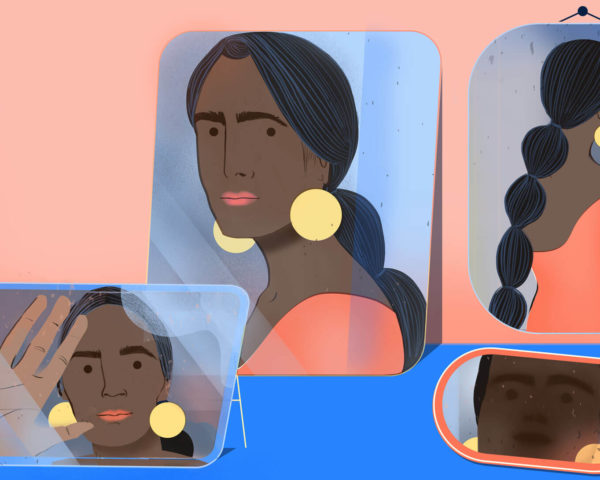5-second summary
- Deep knowledge of a team member’s personality can help you create a positive and productive working relationship.
- Many companies use personality testing in the interviewing process or as a team-building activity, but there are many tests out there.
- Our team sampled the most common workplace personality tests – Clifton Strengths, the Enneagram, and DiSC (also known as Colors) – to see which ones we liked best.
They say “it takes all kinds,” and never is that more true than at work. Ultimately, a diverse representation of people make for the best teams – but working alongside a group of other humans is hard.
Miscommunication and misunderstandings are unavoidable, and we often dream up narratives about our team members to explain their behavior that may be rooted more in our own biases than our colleague’s lived experience. One of the best ways to cut through the misunderstanding is by, well, understanding our team members as individuals, and contextualizing their unique personalities, strengths, and motivations. Deep knowledge of a team member’s personality (and that it is different – not better, not worse – than yours) can help you create a positive and productive working relationship.
The working world has long been capitalizing on the benefits of this particular brand of team bonding – personality testing is a two-billion dollar industry as of latest count. Many companies use personality testing in the interviewing process or as a team-building activity. But with so many types of personality tests out there, how do you know where to start?
That’s where we come in. Over the last year, my team sampled the most common workplace personality tests to see which ones we liked best. We tried CliftonStrengths, the Enneagram, and DiSC (also known as Colors). Check out our road-tested reviews below.
 CliftonStrengths Assessment
CliftonStrengths Assessment
This is likely the most popular test in the world of business. Developed by Don Clifton, American psychologist and the founder of Selection Research (now known as Gallup), the assessment is predicated upon the idea that we each have a set of strengths we bring to the workplace.
By understanding each team member’s strengths, teams can organize their work to bring out the best in the individuals composing them. There are 34 strengths, organized into four main categories: Strategy, Relationship Building, Influencing, and Executing.
| Strategic Thinking People with dominant strategic thinking help teams think of what could be. Analytical Context Futuristic Ideation Input Intellection Learner Strategic | Relationship Building People with dominant relationship building know how to build bonds both on a team and across teams. Adaptability Connectedness Developer Empathy Harmony Includer Individualization Positivity Relator |
| Influencing People with dominant influence know how to speak up, take charge, and make sure the team is heard. Activator Command Communication Competition Maximizer Self-Assurance Significance Woo | Executing People with dominant executing know how to make things happen. Achiever Arranger Belief Consistency Deliberative Discipline Focus Responsibility Restorative |
We took the online questionnaire from Gallup, then met as a team to discuss our results. That discussion proved very illuminating to us – as each person shared their top strengths, we started to understand their background, why they approached a project in a certain way, or why they valued certain elements of their work over others.
The most valuable part of this personality test for me was seeing how we could map each team member’s strengths to the actual work we were doing. For example, if my team was rolling out a new change, we could lean on someone with high strength in communication to build and share the presentation, and we could lean on a teammate with high woo in order to raise awareness and get people excited about the change.
“Learning people’s top strengths was really exciting when it came to planning new projects. It was easy to see how certain people should be put on a project for the strengths that they had. Or to think about cycling people in and out of project phases depending on their strengths.” – Karina
| Pros | Cons |
| Easy to understand and communicate strengths | Doesn’t really help you get to know your team members on a personal level |
| Easy to apply to work, both ongoing and upcoming |
Our star rating of CliftonStrengths: 



 The Enneagram
The Enneagram
With supposed roots in ancient times, and popularized by Bolivian philosopher Óscar Ichazo, the Enneagram personality assessment has been hugely popular among amateur enthusiasts and is making its way into the corporate world.
The Enneagram posits that there are nine core personality types in the world, each of them unique in their core motivations, which in turn inform all of their behaviors.
We took the test available from The Enneagram Institute and then ran a session with a trained facilitator to discuss our results and share.
Similar to CliftonStrengths, the results were illuminating in terms of explaining the core motivations of team members, which help explain how they approach work.
For example, our team leader was a 7, The Enthusiast. This person sees opportunity everywhere and tries to avoid negative situations. At work, this translated into this person always wanting to chase after the “next big thing”, while minimizing challenges or negative experiences. There were a lot of nodding heads and knowing looks around the table when our 7 shared their personality type.
Here’s what one of our team members had to say:
“I’d heard about the Enneagram for years and had developed a sort of suspicious eye toward it. When we started the test as a team, and I didn’t connect with any of the first few ‘number’ types, I figured it probably just wasn’t for me. But then my type, a 4, was described and I connected to it immediately. Not only did it describe me to me, it seemed to help others understand me better, partially because of how much I felt the characteristics were accurate. For example, when working in teams, or collaborating, or even in conversation with a friend, I really want my thoughts, advice, and ideas to be well received. If quickly shut down, or not seen as offering value, my feelings get hurt. So I was able to describe this experience to my team in a way I hadn’t been able to before.” – Jamey
Another team member shared:
“Enneagram gave me the deepest insight into who my teammates are as humans – not just as professionals. There were definitely a few epiphanies! Maybe for that reason, I’ve retained more of the info revealed by Enneagrams than the other two. It made both the strongest and longest-lasting impression on me.” – Sarah
| Pros | Cons |
| Easy to identify your Enneagram type | Required a time investment to fully understand |
| Speaks to core motivations rather than behavior | |
| Very applicable to your personal life as well |
Our star rating of Enneagram: 



 DiSC, or Colors
DiSC, or Colors
Those with Dominance tend to prioritize results and project confidence. Those with Influence value relationships and persuasion. Steadiness is characterized by dependability and cooperation, and Conscientiousness values quality, expertise, and competency.

We took the Everything DiSC test online and shared our results collectively afterward in an hour-long team meeting.
| Pros | Cons |
| Easy to understand how each type is reflected in communication and working styles | Questionnaire was a little awkward to fill out – some questions’ meaning wasn’t totally clear |
| Results plot you on a graph so you can see how much you embody a type or not | Results are sometimes worded in a negative way – not as friendly for sharing out (e.g., “I don’t like incompetencies in my teammates” – who wants to say that out loud?) |
| Results give you advice on how to collaborate with other team members, based on their type |
Personally, I was impressed with the level of detail the DiSC assessment goes into and how their website lets you compare your profile to a teammate’s profile to see where the two of you are most likely to clash versus where you’ll have an easy time working together.
Our star rating of DiSC: 

We are who we are, no matter how you slice it
The most interesting part of this whole exploration is that our results were consistent across all of the different assessments. This was encouraging because it showed us that we all do have core personalities that we bring to work, and that doesn’t really change regardless of what perspective you measure from.
For example, I am a 1 on the Enneagram, which means I care a lot about living up to my expectations of myself and others. In CliftonStrengths, my core strengths are Strategy, Developer, and Belief, which makes a lot of sense for someone with clear goals and expectations. And in the DiSC profile, I was on the line between Dominant and Conscientious, which also made sense for a person with clear goals and a desire for excellence.
So which assessment did we like best?
The Enneagram definitely won as the favorite test among the team, with a strong vote for DiSC. Check out our individual votes below, along with a snapshot of our personality type results.
| Who | Personality profile | Favorite personality test |
| Jamey Brand Content Editor | CliftonStrengths: Learner, Empathy, Intellection Enneagram: 4 DiSC style: Influence | Enneagram |
| Sarah Principal Writer | CliftonStrengths: Input, Discipline, Communication Enneagram: 8 DiSC style: Dominance/Influence | Enneagram |
| Tanaz Engineering Editor | Enneagram: 5 DiSC style: Conscientiousness | DiSC |
| Karina Managing Editor, Products & News blog | CliftonStrengths: Deliberative, Analytical, Discipline Enneagram: 9 DiSC style: Conscientiousness | Enneagram |
| Lauren Managing Editor, Work Life blog | CliftonStrengths: Communication, Woo, Empathy Enneagram: 4 DiSC style: Influence | Enneagram |
| Natalie Brand Content Lead | CliftonStrengths: Strategy, Developer, Belief Enneagram: 1 DiSC style: Dominance/Conscientiousness | Enneagram |





 )
) 








































